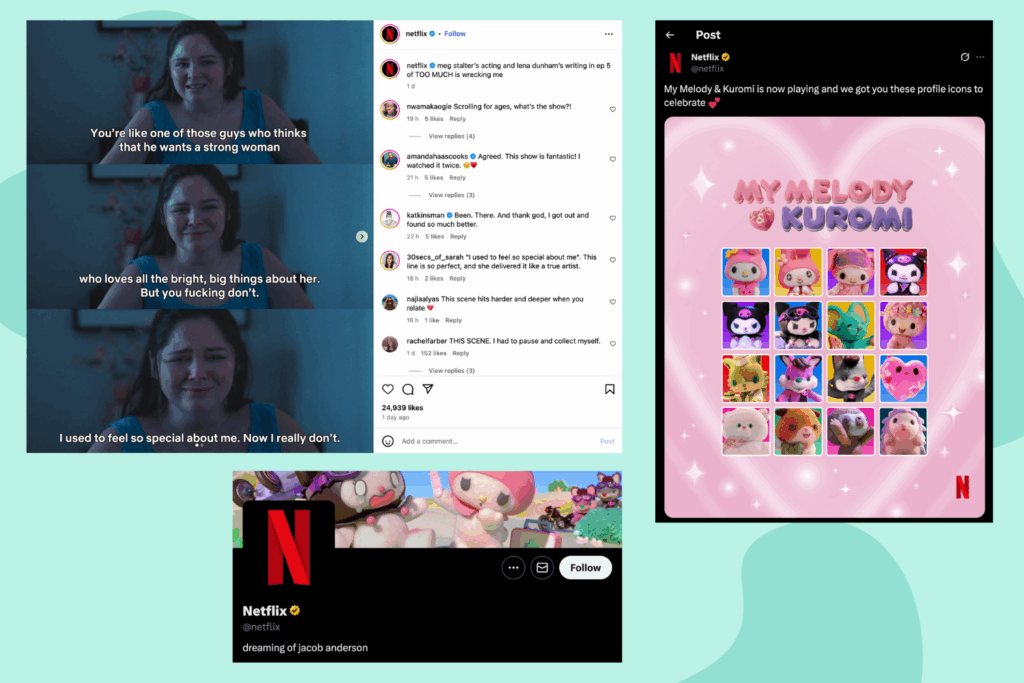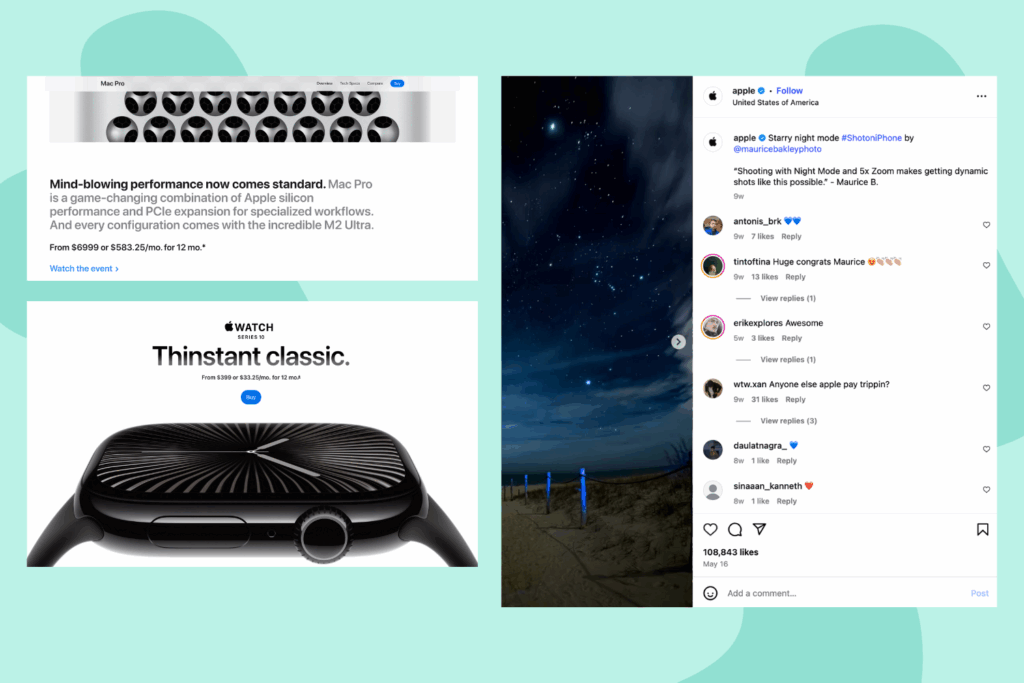Whether you are a new or established business, having a set tone of voice is necessary to ensure your business has a consistent way of communicating. No matter if you’re posting a tweet, writing a blog, or answering customer questions, the way you communicate affects how people see and feel about your brand.
In this blog, we will explain what brand tone of voice is and show you how to use it, with examples.
What is brand tone of voice
A brand tone of voice is essentially how your brand, and its associated members (employees, management, etc.), speak. It sets a distinct tone and personality that is based on your branding and your audience.
For example, if you are a D2C brand targeting Gen Z, your tone should be casual and quirky. But if you are a SaaS company targeting B2B businesses, your tone should be formal, professional and focused on facts to show you are a leader in your field.
A brand tone of voice applies to all platforms – website, social media, advertising, emails, packaging, and more. Brand tone of voice shapes how audiences perceive and relate to a brand, making it essential for strong, consistent brand identity.
Importance of brand tone of voice
Your brand’s tone of voice is important because it shapes how people see and connect with your business. Here’s why keeping your tone consistent matters:
1. Builds recognition & trust: Using the same tone makes your brand stand out and makes it easier for people to remember you. When your messages are consistent everywhere, people are more likely to trust you.
2. Shows brand personality: Your tone of voice tells people what your brand is like. Whether you’re friendly or formal, your tone helps customers understand what you’re all about.
3. Helps people feel connected: How you speak to your audience can make them feel understood and valued. The right tone encourages people to stay loyal and interested in your brand.
4. Sets you apart: Having a unique tone makes you different from other brands. It shows what’s special about you and why people should pick you over competitors.
5. Makes communication clear: A clear tone gives your team guidance on how to write and speak for your brand. This means your messages will always be easy to understand and work well everywhere.
6. Helps you communicate effectively: The right tone delivers your messages in the best way. For example, a calm tone can comfort customers, while an enthusiastic tone can inspire them to act.
In short, your brand’s tone of voice is a key part of who you are. It builds trust, helps people remember you, and keeps customers coming back.
Brand tone of voice examples
The easiest way to learn about brand tone of voice is by looking at well-known brands and seeing how they communicate. That’s what we will do too.
Netflix
Netflix is a company that focuses on entertainment; hence, they need to have a brand tone of voice that is fun and jolly.

Netflix’s tone is friendly and feels like chatting with a friend who always has a good show to suggest. It’s welcoming, excited, and aims to connect with people of all ages around the world. Their social media is full of things like memes that help continue this same friendly style of communication.
Ryanair
Ryanair’s tone is known for being bold and cheeky, especially on social media. They’re not afraid to make fun of themselves, competitors, or even their customers. This lighthearted approach makes their brand memorable and relatable—especially for a cost-conscious, no-frills audience.

Apple
Apple’s tone of voice and marketing is entirely different from Ryanair and Netflix. The communication is always clear, concise, and focused on how its products empower users. Their tone feels stylish and highlights their values of elegance and new ideas.
Also, Apple backs most of its statements with facts and numbers, which helps them build credibility and trust.

How to create a tone of voice
Creating the perfect tone of voice for your brand starts with a clear understanding of your brand positioning and target audience.
Begin by asking yourself: Who are we? What are we offering? Who are we trying to reach? Answering these questions will guide you in developing a tone that aligns with your brand and connects with your audience.
Your tone should represent your brand’s identity and connect with your audience. To achieve this, take the time to understand your audience’s demographics, interests, and pain points. This insight will help you tailor your communication style effectively. Consider:
- What language, references, and humour will your audience relate to?
- What could potentially alienate or disengage them?
For example, if you want to position your brand as a thought leader, it’s important to adopt a professional tone and support your statements with credible data and statistics.
Implementation of tone of voice
Creating a tone of voice is just the starting point; it’s essential to ensure that this tone is consistently used across your website, social media, and newsletters by you and your employees.
To implement this, it’s important to have tools that make it easier to maintain the right tone of voice. Tools like Typetone, Grammarly Enterprise, and Writer allow you to upload your tone of voice and help keep a check on all the content written for your brand.
Conclusion
A perfect brand tone of voice is authentic, consistent, and matches what your audience wants. It makes ordinary interactions memorable, builds trust, and encourages loyalty. Remember, tone of voice isn’t just for your website and social media – it also matters in things like your newsletter and ads.


No Comments
Leave a comment Cancel